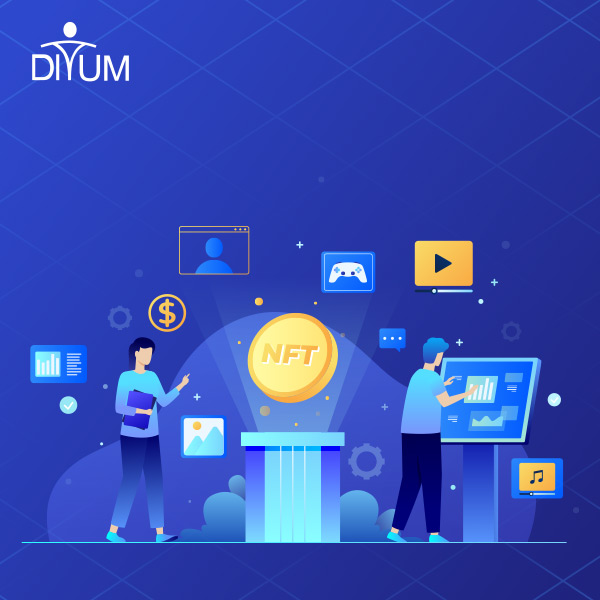Your company has been struggling to maintain a clear and accurate picture of its cash flow. Anomalies in the data have been difficult to account for. You need to know the true state of your company, but you don't have the resources for in-depth, manual analysis. What do you do?
Machine Learning is an excellent way to forecast your cash flow and uncover anomalies due to their current inaccuracy with traditional methods. ML allows you to accurately predict future periods and see potential risks before they occur. It can also be deployed rapidly, saving both time and money.
The essence of a business is based on two things: Product and Services. The very nature of Digital Transformation dictates that the company must be able to deliver these services with ease. However, how does one go about achieving this? Optimizing processes through automation and process simplification would only bring about efficiency but not necessarily proficiency or excellence.
With this in mind, ML for forecasting cash flow was initiated.
The problem with Cash Flow Forecasting
Cash flow forecasting is a difficult task, especially if you are dealing with disparate systems. Each system has its own set of limitations and intricacies. All cash flow models, even those more advanced than regression models, are limited in their ability to predict the future since they are simply modeled after assumptions and measurements in the past.
Cash flow forecasts should not be taken as gospel truth but rather as a means to an end, where we want to use our current knowledge of past data to make decisions that could change the direction of our company's future.
The Big Picture
The vision for this project was to expedite such tasks as cash flow planning and budgeting, streamlining operations, and enhancing Company-wide business process coordination.
The system should be able to integrate with disparate systems to make better decisions. By using a business-driven approach rather than a technology-driven approach, along with technological advancements in Machine Learning, we can make better predictions for the future that will help make the process more accurate.
The problem was broken up into 4 parts: data cleaning, data analysis, data visualization, and then the Machine Learning algorithms. The ML models are just one way of approaching the problem with our current scenario, but they could be combined with others like neural networks or regression analysis.
The problem with data cleaning
The first problem to solve was data cleaning. Data needed to be made structured and cleaned of any anomalies. The client had several different systems that were generating the data (ERP, CRM, BI, and Excel) so it was crucial to have all the data in one place from one source.
The company utilized a large number of disparate systems, which made cleaning the data especially difficult. Each system was producing its history for each account that didn't always align with the others due to slight differences in how each system collected or calculated information. All of these differences combined caused problems when trying to produce accurate forecasts and projections.
Data cleaning is an important (if not the most important) step in a successful project. Without it, you get a lot of problems with inconsistencies and data errors that will greatly affect your ability to draw accurate conclusions from your analysis, as well as your ability to produce accurate models for forecasting.
The Last Mile Approach For Data Cleaning
The last mile approach is the final part of data preparation. It includes tasks such as ensuring that missing data are filled in appropriately, ensuring that outliers are identified, removing any noise from the process, and so forth. I've found it's easiest to think of this phase as "the icing on the cake". It's where you can make a good model great.
When cleaning the data, a Forecasting Expert Advisor was used to complete a series of tasks that were not easily done in Excel. The Forecasting Expert Advisor is usually used for completing various tasks in Excel, such as rolling up values from one row to another, formatting certain dates that come in from sales orders, and so forth. We were able to use this feature instead to clean the data.
Our Unique Proposition:
ARIMA Model:
ARIMA stands for Auto-Regressive Integrated Moving Average. It is used to improve on the simple moving average by allowing one to account for both past values and the predicted future values in their forecasts. The model primarily uses data from a series of past business cycles.
SARIMA Model:
SARIMA stands for Seasonal Auto-Regressive Integrated Moving Average. It follows the same idea as the ARIMA model, but it is specifically adapted to seasonal data. It is most effective with data that is sampled at a specific time throughout the year, such as the first few days of January each year.
When forecasting seasonal data, it is able to account for both past values within the model and the predicted future values.
In other words, different assets have different levels of volatility during a given season. If we do not account for this in our models, it could cause predictions to be inaccurate.
The ML models are also trained on past data in order to predict future periods. This allows us to see what happened before and use that information to infer what will happen in the future. A common example is predicting revenues based on historical growth rates.
Our developers have extensive experience in software development, which means they will be able to deliver a high-quality product on time and within the given budget, you specify. We work quickly and efficiently to build highly complex software platforms with a focus on user interface design, features, and ease of use. Our developers' design working product prototypes that stay accurate in real-world use cases from the beginning of the project until completion.
We used SARIMA & ARIMA models to predict future cash flows.
Cash Flow forecasting: Delivering insightful, timely information to decision-makers so they can make informed decisions using our VBA and Excel models that were custom built to forecast by account and entity. A Big Data Analytics project to automate the data cleaning process using our Forecasting Expert Advisor, while enhancing the accuracy of cash flow forecasts and allowing us to incorporate Machine Learning algorithms.
Payment risk forecasting: Identifying the likelihood that a customer will pay in full for their purchase by analyzing past purchase data, daily performance metrics, and current economic forecasts.
Cash flow forecasting: Delivering insightful, timely information to decision-makers so they can make informed decisions using our VBA and Excel models that were custom built to forecast by account and entity. A Big Data Analytics project to automate the data cleaning process using our Forecasting Expert Advisor, while enhancing the accuracy of cash flow forecasts and allowing us to incorporate Machine Learning algorithms. Payment risk forecasting: Identifying the likelihood that a customer will pay in full for their purchase by analyzing past purchase data, daily performance metrics, and current economic forecasts.
Customer Churn risk forecasting: Identifying customers who are most likely to be removed from our customer list based on factors such as the number of purchases, average amount spent per purchase, and returning customer rate.
A Modern Approach Using AI & ML
We needed to integrate our disparate systems by using AI and ML. The first step was coming up with a system that could integrate the data from each of these different systems. We then needed to make the data structured in such a way that it would be easier for the system to make predictions based on the information.
Machine Learning is one of the best ways to produce accurate cash flow forecasts because it's far more flexible than simple regression models. For ML algorithms to work, they need clean and uniform data so it can be used as an input and not an exploitable weakness. By cleaning and organizing your data, you are making your model more accurate in the long run.
After cleaning the data, you must now begin to analyze it. This involves making sense of the information. What are your past trends? Where do you stand right now? What is your actual risk? You need to determine if you have an actual problem before using ML to solve it because the algorithms will be useless if there isn’t a problem to solve.
Visualizing the data after performing an analysis is key to getting a better understanding of your business and how it operates. Again, Machine Learning algorithms are fantastic for forecasting but they can't account for an accurate picture of what is currently happening. A good visualization can help provide further insights and make useful suggestions to help save yourself time and money in the future.
The last step is combining all of this information with a set of estimates to create cash flow forecasts. This can be done in multiple ways, one of which is using a Forecasting Expert Advisor like Excel VBA, but here we are using ML with both data preparation and forecasting. We have created an EDA that takes the data pre-processed by the Forecasting AI and uses it to make cash flow forecasts for specified time periods.
This cash flow forecasting approach will only work if you have very clean data that has been analyzed thoroughly by multiple systems that are used for forecasting.
Summary:
In the last mile approach we took, we used AI and ML to not only clean the data but also to create forecasts. This requires extremely clean, consistent data that has already been analyzed by multiple systems and then used as an input for forecasting. If you have this quality of data, use AI to do the last mile approach of cleaning. If you don't have this quality of data then the best approach is perhaps doing the last mile by hand.
Forecasting can be complex if done manually because there are a lot of variables to look at and a lot of assumptions that need to be made. You need a system that can integrate your business in such a way that it will serve you well for years to come. We can help you not only in forecasting but also in planning for the future.

